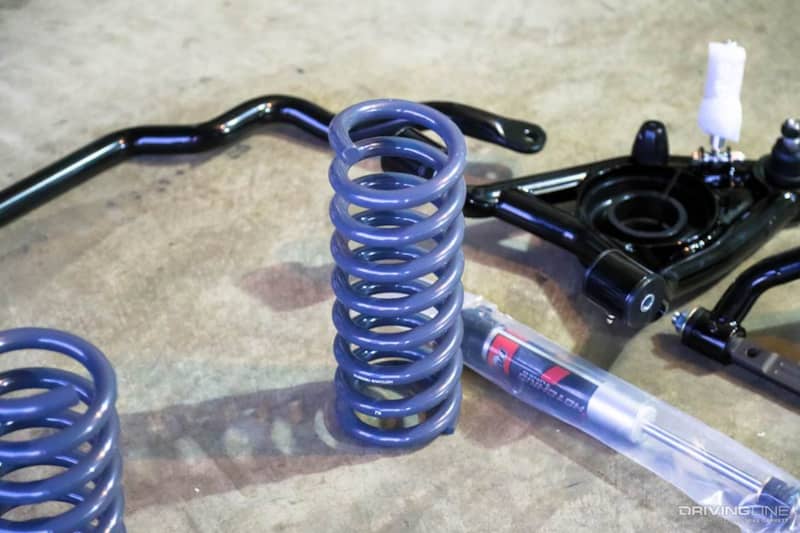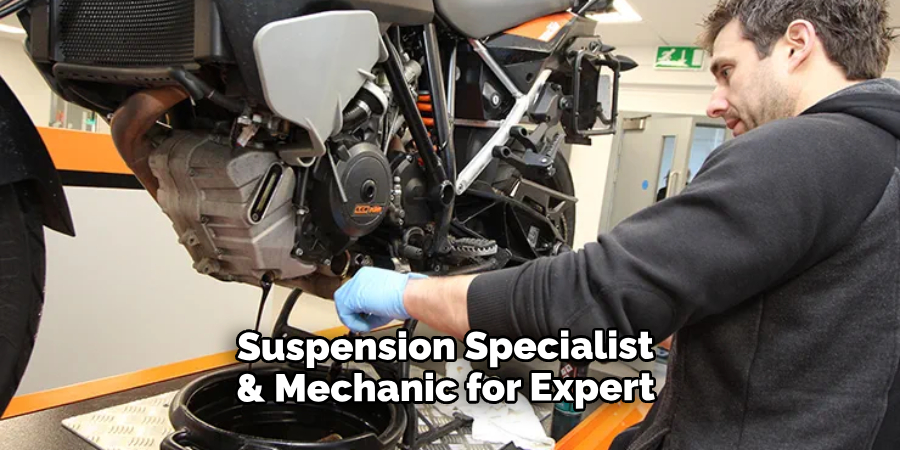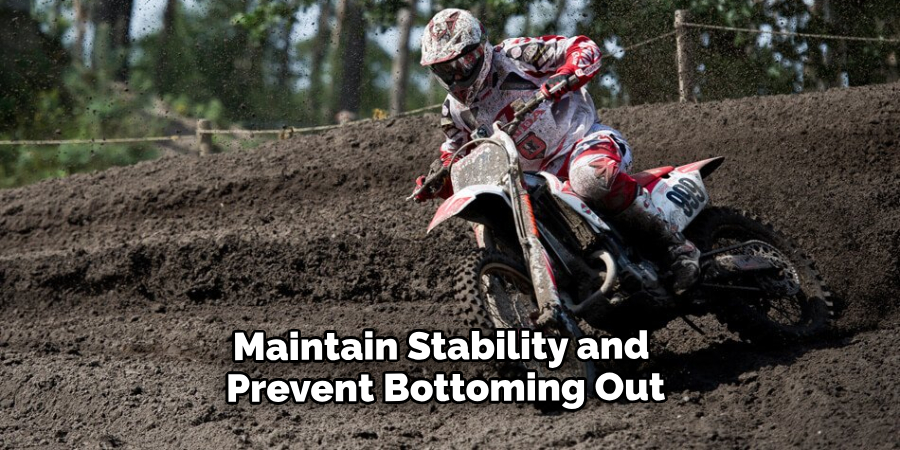To tune suspension, adjust the suspension settings according to your riding preferences and vehicle requirements. This process involves making adjustments to the compression, rebound, and preload of the suspension to optimize its performance.
Tuning suspension helps in improving traction, stability, and overall comfort while riding.

Credit: www.drivingline.com
Suspension Basics
| Suspension plays a crucial role in providing a smooth and controlled ride. Understanding the various components of the suspension system is vital for optimizing its performance. The suspension setup directly affects the handling, stability, and comfort of a vehicle. By properly tuning the suspension, you can enhance the driving experience and ensure maximum safety on the road. Key suspension components include shock absorbers (dampers), springs, anti-roll bars, and bushings. Each component contributes to the overall behavior of the suspension. It’s important to choose the right components that match your driving style and vehicle type. A proper suspension setup is crucial for maintaining tire grip, reducing body roll, and improving responsiveness. It allows for better traction and stability during cornering and braking. Additionally, it helps absorb shocks from uneven road surfaces, ensuring a more comfortable ride for occupants. With a well-tuned suspension, you can enjoy better control, handling, and safety on both smooth highways and rough terrains. |
How to Tune Suspension: Step by Step Guide
Weight Distribution
Understanding weight distribution is crucial when it comes to tuning suspension. The distribution of weight affects the performance of the suspension system in several ways.
Firstly, weight distribution determines how the vehicle handles and corners. A balanced weight distribution ensures stability and enhances vehicle control while turning. Uneven weight distribution, on the other hand, can lead to poor handling and compromised safety.
Secondly, weight distribution impacts the suspension’s ability to maintain traction and grip. When weight is unevenly distributed, certain tires may be overloaded, reducing their grip on the road. This can result in reduced traction and compromised braking performance.
Furthermore, understanding weight distribution helps optimize the suspension setup. By analyzing the distribution of weight, adjustments can be made to the suspension components, such as spring rates and damping settings, to ensure optimal performance for the specific weight distribution of the vehicle.
| Importance of understanding weight distribution | How it affects suspension performance |
|---|---|
| Affects handling and cornering | Impacts traction and grip |
| Enhances vehicle control | Reduces traction and braking performance |
| Helps optimize suspension setup | Allows adjustments for optimal performance |
Ride Height And Sag
In order to optimize your suspension, it is crucial to understand ride height and sag. Determining the optimal ride height plays a significant role in achieving proper performance and handling. sag refers to the amount of suspension travel that is compressed under the weight of the rider or vehicle. It is important to adjust sag to ensure proper balance and control.

Adjusting sag will enable you to fine-tune your suspension to suit your specific needs and preferences. By adjusting the preload on your suspension springs, you can alter the sag to optimize performance. It is generally recommended to have a sag of around 25-30% of the suspension’s total travel.
Proper sag adjustment ensures that your suspension is operating within its desired range, allowing for optimal traction, stability, and responsiveness. It can significantly enhance your riding experience by improving cornering, reducing bottoming-out, and enhancing overall comfort.
Remember, to achieve the best results, it’s important to consult your suspension manufacturer’s guidelines and recommendations. By fine-tuning your ride height and sag, you can enhance your suspension’s performance, making your riding experience more enjoyable and controlled.
Damping And Rebound
Damping and rebound are crucial elements to consider when tuning the suspension of a vehicle. Understanding the adjustments you can make to damping can greatly enhance the overall performance and handling of your vehicle.
When tuning the rebound, it is important to find the optimal setting that allows the suspension to recover quickly after compression. This helps to maintain tire contact with the road surface, ensuring better traction and responsiveness.
Adjusting damping can be achieved through various methods such as changing the viscosity of the shock fluid or altering the valve settings. Experimenting with different damping adjustments can help you find the right balance between comfort and performance for your specific driving style and conditions.
By fine-tuning the damping and rebound of your suspension, you can improve the ride quality, reduce body roll, and enhance overall handling. Remember that every vehicle is different, so patience and experimentation are key when finding the perfect suspension tuning for your needs.
Spring Rate Selection
Factors to consider when choosing spring rates
Calculating the ideal spring rate for your suspension is crucial to achieving optimal performance. There are several factors to consider before making your selection.
| Factor | Description |
|---|---|
| Vehicle weight | Determine the weight of your vehicle, including any additional loads or modifications. |
| Driving style | Consider how you typically drive your vehicle, whether it’s aggressive or more relaxed. |
| Desired ride quality | Think about the level of comfort and responsiveness you are looking for in your suspension. |
| Surface conditions | Take into account the types of surfaces you will be driving on, such as smooth roads or rough terrain. |
| Handling characteristics | Consider how you want your vehicle to handle, whether you prefer a stiffer or softer suspension setup. |
| Professional advice | Consult with a suspension specialist or mechanic for expert guidance tailored to your specific vehicle and requirements. |
By carefully assessing these factors, you can make an informed decision when selecting spring rates for your suspension setup, leading to improved driving experience and performance.

Adjusting Preload
Adjusting preload is an essential step in tuning suspension for optimal performance. The process involves adjusting the tension in the suspension system to ensure the ideal balance between comfort and stability. Preload adjustment is important because it affects how the suspension responds to bumps, turns, and varying road conditions.
Accurately adjusting preload is crucial to achieve the desired suspension characteristics. It allows riders to fine-tune their suspension to suit their specific needs and preferences. By adjusting preload, riders can optimize their bike’s handling, cornering, and overall ride quality.
When adjusting preload, it’s important to follow the manufacturer’s recommendations and use the appropriate tools. The adjustment is typically made by turning the preload adjuster on the fork or shock absorber. It’s recommended to make small, incremental changes and test the suspension after each adjustment to assess the impact.
By understanding the importance of preload adjustment and following the proper steps, riders can ensure their suspension is tuned to provide the best possible riding experience.
Damping Adjustments
| Damping Adjustments |
| Different Types of Damping Adjustments |
When it comes to tuning suspension, one crucial aspect is making damping adjustments. Damping adjustments refer to controlling the compression and rebound of the suspension to optimize performance and handling. There are different types of damping adjustments available, each serving a specific purpose:
- Compression Damping: Controls how the suspension compresses when encountering bumps or uneven terrain. It helps maintain stability and prevent bottoming out.
- Rebound Damping: Manages how the suspension rebounds after compressing. It influences how quickly the suspension returns to its default position, ensuring grip and precise handling.
- High-Speed Damping: Focuses on managing larger impacts and faster compression and rebound movements, typically encountered during aggressive riding or off-road situations.
- Low-Speed Damping: Fine-tunes smaller suspension movements, aiding in enhancing comfort, traction, and control.

To perform proper damping tuning, it is essential to follow the right techniques:
- Understand Suspension Components: Familiarize yourself with the different parts and their functions, such as damping adjusters, rebound adjusters, and clickers.
- Start with Baseline Settings: Begin with the manufacturer’s recommended settings and adjust from there, considering your riding style, terrain, and preferences.
- Make Incremental Adjustments: Make small changes to the damping settings, noting the effects after each adjustment. This iterative approach helps find the optimal balance.
- Test and Evaluate: Take the tuned suspension for a ride in various conditions and assess how it performs. Fine-tune as necessary to achieve the desired response.
- Seek Professional Help: If you’re unsure or lack experience, consulting a professional suspension tuner can provide expert guidance tailored to your needs.
Testing And Measuring
When tuning suspension, testing and measuring are crucial steps to ensure optimal performance. Testing the suspension setup allows for adjustments to be made based on real-world performance and feedback. This helps identify any limitations or areas that may need improvement. It also helps in determining the effectiveness of any changes made to the suspension setup.
Measuring suspension performance provides valuable data that can be analyzed to make informed decisions. This includes measuring parameters such as suspension travel, damping force, and spring rate. By accurately measuring these factors, adjustments can be made to achieve the desired handling characteristics.
Boldly measuring and testing suspension setups are necessary steps in the tuning process. They provide valuable insights that help optimize the suspension performance, resulting in a smoother and more controlled ride.
Making Incremental Changes
When it comes to suspension tuning, making incremental adjustments can bring significant benefits. Small changes allow you to fine-tune your suspension to achieve the perfect balance between comfort and performance. By carefully making precise adjustments, you can optimize the handling of your vehicle and enhance the overall driving experience.
Instead of making drastic modifications, focusing on small adjustments gives you the ability to analyze and measure the impact of each change. This approach ensures that you can easily identify the effects of your tuning decisions and make further adjustments as needed. Additionally, it minimizes the risk of unintentionally introducing negative handling characteristics that could affect the stability and safety of your vehicle.
When making these precise adjustments, it’s vital to consider factors such as spring rates, damping, and ride height. Gradually modifying these aspects will help you tailor the suspension to your specific preferences and driving conditions.
By following this incremental tuning method, you can achieve a suspension setup that suits your needs, whether you’re looking for improved cornering, a smoother ride, or enhanced stability. Remember, small changes can make a big difference in your overall driving performance.
Seeking Professional Help
Knowing when to seek professional assistance for tuning your suspension is crucial. While some adjustments can be made by enthusiasts, collaborating with suspension specialists can provide comprehensive solutions. These experts possess the knowledge, skills, and tools necessary to fine-tune your vehicle’s suspension system.
When to Seek Professional Assistance
It’s advisable to consult professionals in the following scenarios:
- When experiencing extreme handling issues, such as excessive body roll or instability at high speeds.
- If your suspension components have worn out or sustained damage.
- When in doubt about the correct settings for your specific vehicle or driving style.
- For track or competition purposes, where precise suspension tuning is essential for optimal performance.
By collaborating with suspension specialists, you can benefit from their expertise and experience, ensuring your suspension is properly adjusted for optimal comfort, handling, and performance in various driving conditions. Remember, seeking professional help is a wise decision to ensure your suspension system performs at its best.
Frequently Asked Questions On How To Tune Suspension
How Does Suspension Tuning Affect Your Vehicle’S Performance?
Suspension tuning plays a crucial role in determining your vehicle’s performance. By adjusting the suspension components like springs, shocks, and sway bars, you can improve handling, stability, and overall driving experience. It allows you to fine-tune your vehicle’s ride quality, responsiveness, and cornering capabilities, ultimately enhancing performance on various terrains.
What Are The Benefits Of Properly Tuned Suspension?
Properly tuned suspension offers several benefits. It improves ride comfort by minimizing vibrations and bumps, provides better control over the vehicle, enhances safety by reducing body roll during cornering, and increases traction and stability. Additionally, it allows you to optimize your vehicle’s performance for specific driving conditions such as track racing, off-roading, or daily commuting.
How Can I Tell If My Suspension Needs Tuning?
Several signs indicate the need for suspension tuning. These include excessive body roll during cornering, uneven tire wear, a bouncy or floaty ride, decreased braking performance, and a generally uncomfortable driving experience. If you notice any of these issues, it’s essential to have your suspension checked and potentially tuned by a professional to ensure optimal performance and safety.
Can I Tune My Suspension Myself, Or Should I Seek Professional Help?
While minor adjustments like tire pressure can be done by yourself, it is recommended to seek professional help for suspension tuning. Experts have the knowledge, experience, and specialized tools to analyze your vehicle’s handling characteristics, diagnose any issues, and make precise adjustments for optimal performance.
Professional guidance ensures that your suspension is correctly tuned to your specific driving preferences and vehicle requirements.
Conclusion
The key to optimizing your vehicle’s suspension lies in understanding its components and making precise adjustments. By following these step-by-step instructions, you can effectively tune your suspension for a smoother and more controlled ride. Remember to consider factors such as vehicle weight, driving style, and road conditions when addressing specific areas of adjustment.
With a well-tuned suspension, you’ll experience improved handling, stability, and overall performance. Don’t forget to regularly assess and fine-tune your suspension to ensure maximum comfort and safety on the road.

